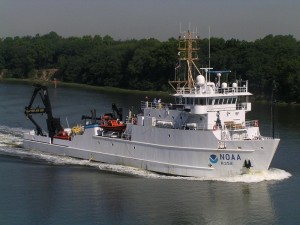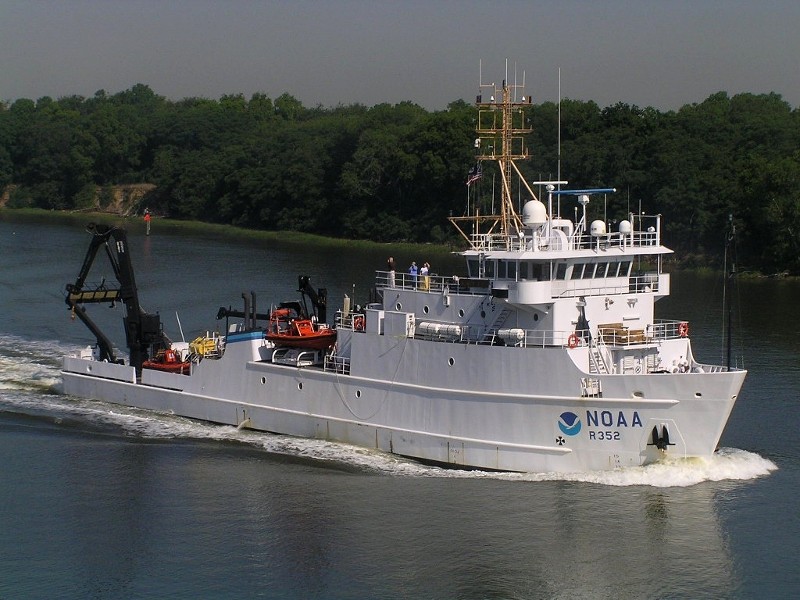
The NOAA ship Nancy Foster, which just embarked on a 10-day voyage to map fish spawning grounds in the Florida Keys National Marine Sanctuary.
Photo credit NOAA
[dropcap]R[/dropcap]esearchers set sail this past Thursday (July 26) off the coast of south Florida to map areas where fish are breeding.
Their findings will help scientists manage and set limits for fishing in the Florida Keys National Marine Sanctuary, which includes the waters off the Keys and stretches west to the Dry Tortugas, islands (and a national park) about 67 miles (108 kilometers) west of Key West.
On the expedition, scientists will use various types of sonar to provide high-resolution maps of the seafloor and search for fish, to learn more about each spawning site and what they have in common. Divers will also take a look beneath the waves to verify sonar readings, and use remotely operated vehicles to make observations in deeper areas.
The cruise came about in response to public comments, during a regulatory review, that more information was needed about fish spawning habitats and how to protect them, said Sean Morton, with the Florida Keys National Marine Sanctuary.
“The scientific results of this cruise will help inform the public and guide management decisions as we continue to look at sanctuary marine zones and regulations,” Morton said in a statement.
The sanctuary’s marine zoning and regulatory review is a multiyear public process to determine whether existing sanctuary boundaries, regulations and marine zones are adequate to address threats to marine life.
Divers will also service and redeploy 74 acoustic receivers in and around Dry Tortugas National Park. The network of receivers is used to detect acoustically tagged fish when they pass within range. It was instrumental in documenting the return of a historic mutton snapper spawning group near the park.
The Dry Tortugas region contains diverse and significant underwater habitats, including sea grass beds and deep coral reef habitats.
[information]
Information provided by OurAmazingPlanet Staff
[/information]






